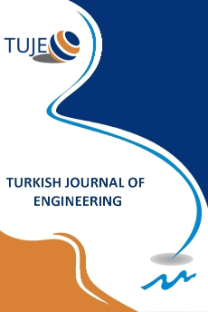INTEGRATED AHP-FMEA RISK ASSESSMENT METHOD TO STAINLESS TANK PRODUCTION PROCESS
INTEGRATED AHP-FMEA RISK ASSESSMENT METHOD TO STAINLESS TANK PRODUCTION PROCESS
___
- Aran, G. (2006). Kalite iyileştirme sürecinde hata türü etkileri analizi (FMEA) ve bir uygulama (Yüksek Lisans Tezi, Gaziosmanpaşa Üniversitesi, Sosyal Bilimler Enstitüsü).
- Ceylan, H. (2000). İmalat Sistemlerindeki İş Kazalarının Tahmini İçin Ağırlıklandırılmış Ortalamalardan Sapma Tekniği. Gazi Üniversitesi, Fen Bilimleri Enstitüsü, Yayınlanmamış Doktora Tezi, Ankara.
- Ceylan, H., & Başhelvacı, V. S. (2011). Risk değerlendirme tablosu yöntemi ile risk analizi: bir uygulama. Uluslararası Mühendislik Araştırma Ve Geliştirme Dergisi, 3(2), 25-33.
- Ceylan, H., & Gül, T. S. (2015). Facts on safety at work for Turkey. Journal of Multidisciplinary Engineering Science and Technology, 2(5), 1192-1200.
- Dey, P. K. (2010). Managing project risk using combined analytic hierarchy process and risk map. Applied Soft Computing, 10(4), 990-1000.
- Eurostat, Statistics European Statistics on Accidents At Work ES, http://europa.eu.int/comm/eurostat [Accessed: 06.03.2020]
- Goddard, P. L. (2000). Software FMEA techniques. In Annual Reliability and Maintainability Symposium. 2000 Proceedings. International Symposium on Product Quality and Integrity (Cat. No. 00CH37055) (pp. 118- 123). IEEE.
- ILO (International Labor Office), http://laborsta.ilo.org. [Accessed: 06.03.2020]
- Korkmaz, A., & Avsallı, H. (2012). Çalışma hayatında yeni bir dönem: 6331 sayılı iş sağlığı ve güvenliği yasası. Süleyman Demirel Üniversitesi Fen-Edebiyat Fakültesi Sosyal Bilimler Dergisi, 2012(26), 153-167.
- Kurt, M. (1993). İş Kazalarının Ergonomik Analizi. Gazi Üniversitesi, Fen Bilimleri Enstitüsü, Yayınlanmamış Doktora Tezi, Ankara.
- Li, S., & Zeng, W. (2016). Risk analysis for the supplier selection problem using failure modes and effects analysis (FMEA). Journal of Intelligent Manufacturing, 27(6), 1309-1321.
- Saaty, T. L. (1980). The analytical hierarchy process, planning, priority. Resource allocation. RWS publications, USA.
- Sivrikaya, B. T., & Ünal, E. (2018). AHP Grup Karar Verme Yöntemi ile Bilgi İşlem Çalişanlarinin Yetkinlik Temelli Performanslarinin Değerlendirmesi. Uluslararası İktisadi ve İdari İncelemeler Dergisi, 501-514.
- Song, J. W., Yu, J. H., & Kim, C. D. (2007, September). Construction safety management using FMEA technique: Focusing on the cases of steel frame work. In 23rd Annual ARCOM Conference (pp. 3-5).
- Wessiani, N. A., & Sarwoko, S. O. (2015). Risk analysis of poultry feed production using fuzzy FMEA. Procedia Manufacturing, 4, 270-281.
- Xu, K., Tang, L. C., Xie, M., Ho, S. L., & Zhu, M. L. (2002). Fuzzy assessment of FMEA for engine systems. Reliability Engineering & System Safety, 75(1), 17-29.
- Yılmaz, B.S. (2000). Hata Türü ve Etkileri Analizi, Dokuz Eylül Üniversitesi Sosyal Bilimler Enstitüsü Dergisi, 2(4), 133-150.
- ISSN: 2587-1366
- Yayın Aralığı: Yılda 4 Sayı
- Başlangıç: 2017
- Yayıncı: Mersin Uüniversitesi
Seçkin ÇELİKER, Esra Saraç EŞSİZ, Murat OTURAKÇI
CLIENT SATISFACTION AS PERCEIVED BY ARCHITECTS AND CIVIL ENGINEERS
TEMPORAL MONITORING OF LAND USE/LAND COVER CHANGE IN KAHRAMANMARAS CITY CENTER
Kubra ALİYAZİCİOGLU, Fatmanur BEKER, Raziye Hale TOPALOĞLU, BURHAN BAHA BİLGİLİOĞLU, RESUL ÇÖMERT
INTEGRATED AHP-FMEA RISK ASSESSMENT METHOD TO STAINLESS TANK PRODUCTION PROCESS
Esra SARAÇ EŞSİZ, Seçkin ÇELİKER, Murat OTURAKÇI
PIONEERING INSTITUTIONS IN SECTOR ON REAL ESTATE APPRAISAL
Fatih TAKTAK, Mahir Serhan TEMİZ
Production of new type insulation material: Expanded Perlite-Silica aerogel composite
Ömer GÜLER, Öyküm BAŞGÖZ, Çağdaş YAVUZ
Rekawt Khdir HAMAD, Canan AKSU CANBAY, İSKENDER ÖZKUL
Ömer GÜLER, Oykum BASGOZ, Cagdas YAVUZ
MICROSTRUCTURAL ANALYSIS OF ZnO-CuPc NANOCOMPOSITES SYNTHENISED BY HYDROTHERMAL METHOD
